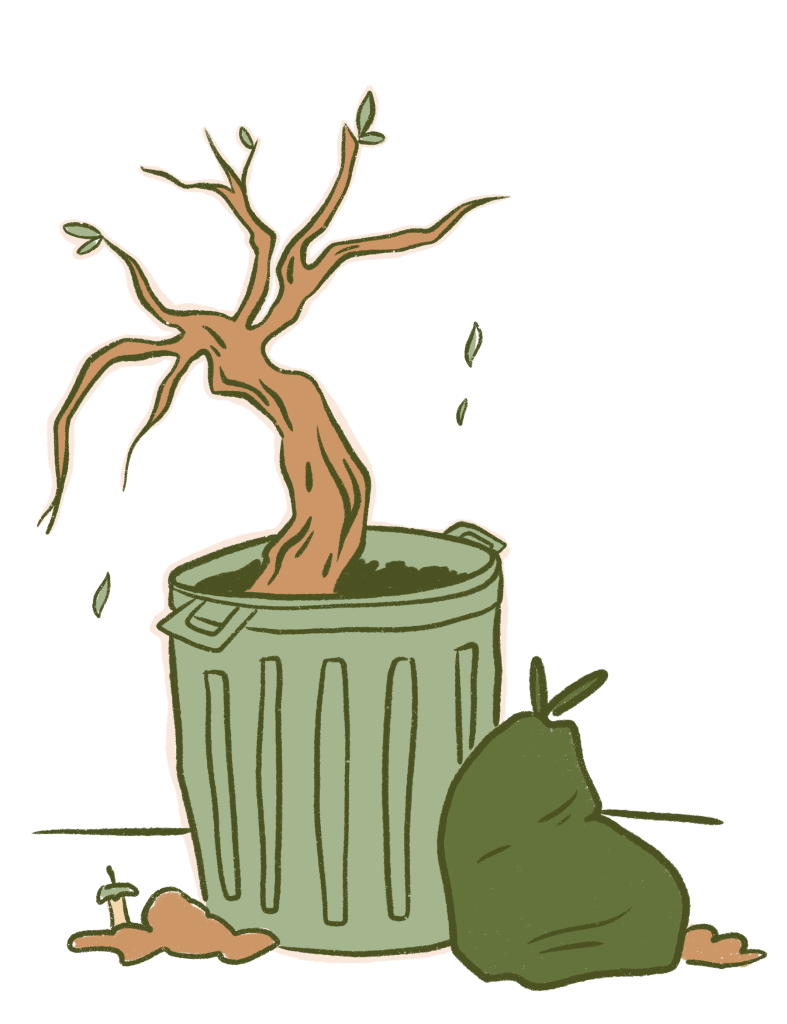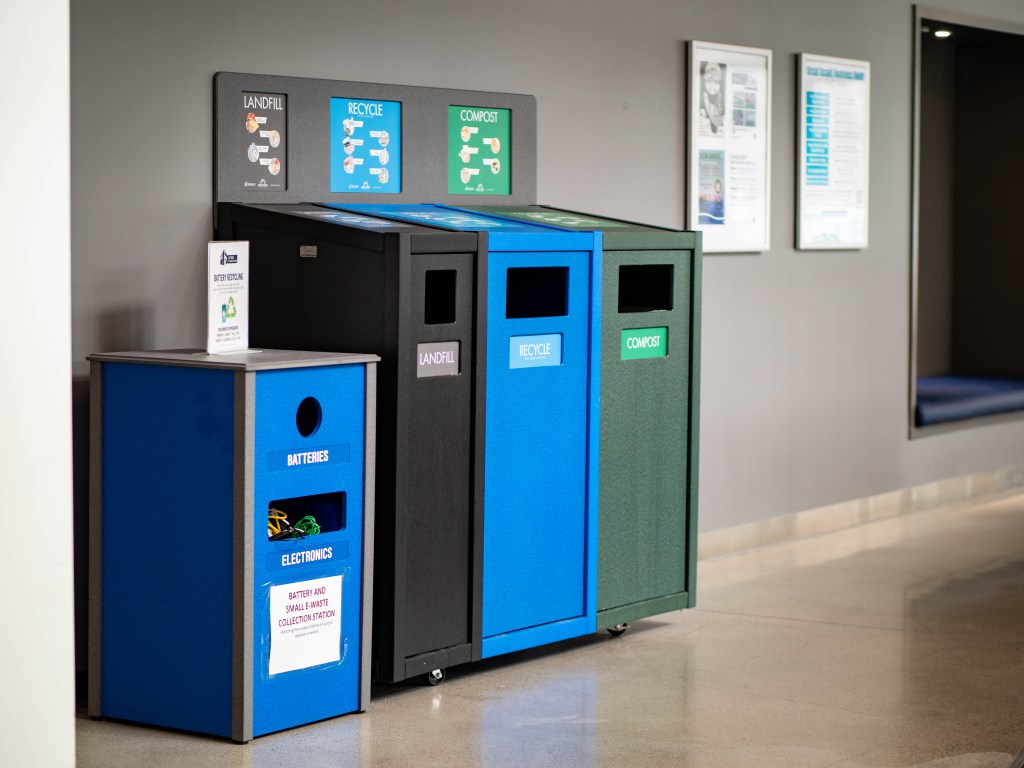“Sustainability is important to CSUMB students.”
This is the first sentence in Cal State Monterey Bay’s (CSUMB) Inclusive Sustainability Plan, citing a 2019 survey that found “over 60% of students indicated that sustainability was an important or very important factor in their decision to attend CSUMB.”
CSUMB’s Inclusive Sustainability Plan was created in 2020 to provide an outline of the university’s vision of sustainability for the next decade.
Of the goals set forth in the plan, three are designated as “core goals” to be achieved by 2030 that “serve as guideposts to unify the campus around a bold vision for sustainability:”
- plant 2,030 trees
- divert 90% of waste from landfills
- and reach carbon neutrality
However, four years after setting these goals, the university does not appear to be on track to meet them. The deadline is self-imposed and there are no external fines or penalties for accountability. The main consequence of falling short of those goals may ultimately be to the planet.
“I don’t think it’s feasible by 2030,” said Lexi Yokomizo, fourth-year environmental science major. “In order to reach those goals, we will have to change a lot of things about campus,”
But CSUMB hasn’t been the only school finding it challenging to meet its goals. In 2013 the UC system committed to carbon neutrality by 2025, but in July published a revised plan to fully decarbonize by 2045.
“There’s always a function of looking inward at your own institution,” said fourth-year environmental studies student Nathan Blakely. However, “as soon as you start organizing at a local level, you realize that your problems aren’t localized.”
A history
CSUMB’s sustainability goals were agreed upon under the American College and University Presidents Climate Commitment.
All 23 CSU campuses have sustainability plans in addition to a system-wide policy approved by the Board of Trustees in 2014, which was recently updated in March.
These commitments are designed to be a “high visibility” way to promote sustainability in universities, though there are no direct consequences for not meeting them.
According to Amy Thomas, CSUMB’s director for environmental health, safety & risk management, the risk “is reputational.”
The commitment requires that campuses participate in the national Sustainability, Tracking, Assessment and Rating System known as STARS, which rates campuses across the country for their progress in pursuing sustainability. Campuses can earn green, bronze, silver, gold or platinum ratings – CSUMB currently has a silver rating.
The most recent STARS report is from February 2023. It is unclear when more recent records will be published as Lacey Raak, CSUMB’s sustainability director in charge of submitting last year’s report, resigned from her position in November. The university is currently looking for a replacement.

Tree Planting
Of the three core goals, CSUMB has made the most progress in its tree-planting efforts.
“We are at over 600 [planted trees] now,” said Laura Lee Lienk, director of the Habitat Stewardship Project, a non-profit organization responsible for the planting.
Though this progress would appear to put CSUMB on track to reach its goal with an estimated 200 trees planted per year, these numbers may be misleading.
According to Cole Mefford, CSUMB alumni and restoration assistant for the Habitat Stewardship Program, depending on the location, between 6% and 40% of trees die after being planted due to factors such as lack of water and soil quality.
“It’s a continuous effort. We probably need twice as much time,” Mefford said.
Additionally, it is unclear whether the Habitat Stewardship Project will be able to continue its tree-planting efforts due to funding concerns.
“We ran out of funding on campus,” Lienk said, noting that the saplings necessary for Habitat Stewardship Projects’s planting events are no longer bought by the university, but rather by a private donor who may or may not continue their support.
Waste Diversion
CSUMB students may be familiar with the “three stream” waste system found around campus, with separate bins going to compost, recycling and the landfill. This system is a key part of CSUMB’s goal to divert 90% of waste from landfills by 2030.
“We more than doubled our diversion of food waste in 2022 likely due to putting many more compost/recycling/trash stations” around campus, said environmental science professor Suzanne Worcester.

In addition to the three stream waste bins, CSUMB drafted a Sustainable Events Blueprint, which provides event organizers with ideas on how to reduce waste associated with their events.
Despite these efforts, according to the STARS report, CSUMB diverts only 38% of its waste from landfills. Though the three-stream bins have increased the amount of food waste diverted, according to Worcester, “there are still problems with people not understanding what goes in each bin.”
Carbon Neutrality
The most recent data on CSUMB’s progress toward carbon neutrality, from 2018-2022, showed only a 3% decrease in emissions directly related to on-campus activities.
Emissions related to travel and waste increased by 18% during this period.
Though this meager progress earned CSUMB a score of 3.42 out of 8 in the “carbon emissions” category of the STARS report, it should be noted that these figures don’t take into account recent developments.
In July 2023, CSUMB revamped its central heating plant with a “heat recovery chiller” which allows the plant to harness energy by recovering heat from water, thereby reducing the amount of natural gas necessary to heat campus facilities.
According to CSUMB’s Energy & Utilities Director Mike Lerch, this will reduce the school’s emissions by an estimated 154 tons of carbon.
In addition to this, CSUMB plans to continue installing LED lights in many of its buildings. By the end of summer, this is estimated to result in a 3.46% reduction in energy usage, according to Energy & Utilities Manager Reese Shetrone.
While these measures represent tangible steps by the university to reduce its carbon footprint, its carbon goals are still limited by the amount of renewable energy it buys. According to Lerch, currently 49% of CSUMB’s energy is from renewable sources, in accordance with the “state-mandated renewable content.”
“We could increase the renewable content above the state-mandated amount, but that would come at a cost and right now the budget is ugly,” said Lerch.
Even with CSUMB’s installation of the heat recovery chiller and LED renovations, in order to reach carbon neutrality, “I think it’s probably going to take more time,” Lerch said.
Outcome
There are many obstacles making it unclear whether the university will reach its sustainability goals such as budgetary concerns, as noted by Lienk of the Habitat Stewardship Project and Lerch, and the lack of immediate consequences for not meeting the goals.
“It doesn’t look good if we don’t meet our own goals, but sometimes a date change is necessary due to unforeseen or unintended interruptions,” said Thomas, CSUMB’s director for environmental health, safety & risk management.
Though it may take more time to complete these goals, many are still optimistic about striving for them.
“People who do care are very present on campus but it’s just how the system is set up on a larger scale, and we’re trying to influence that but it’s really hard when we’re not given the resources or director of sustainability,” said Yokomizo, CSUMB student. “I think that [CSUMB has] very lofty goals and there’s definitely dedicated faculty and students who are trying to work toward them.”

